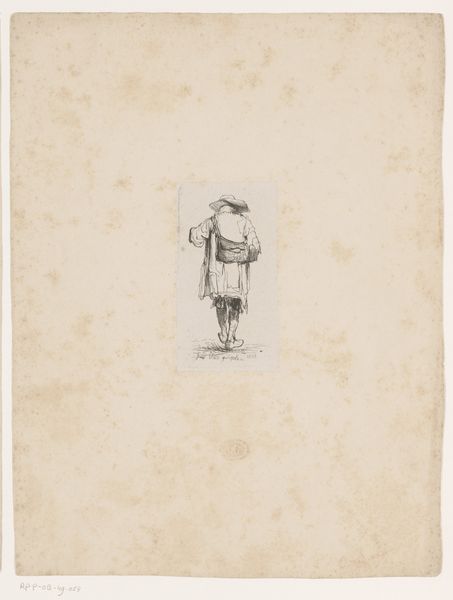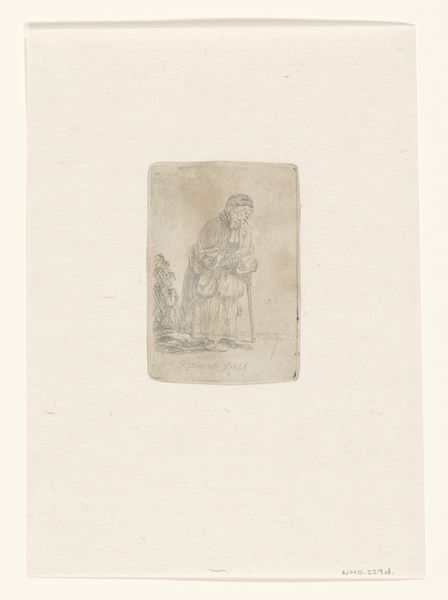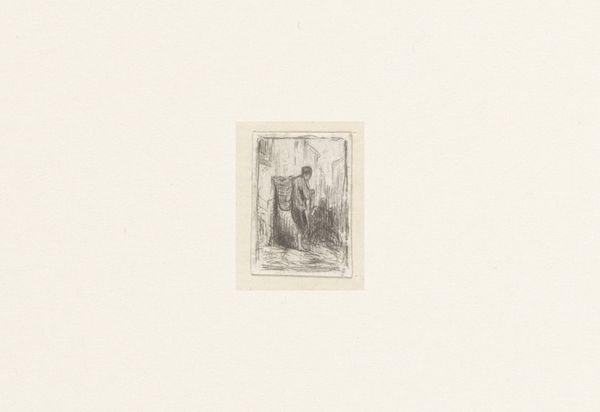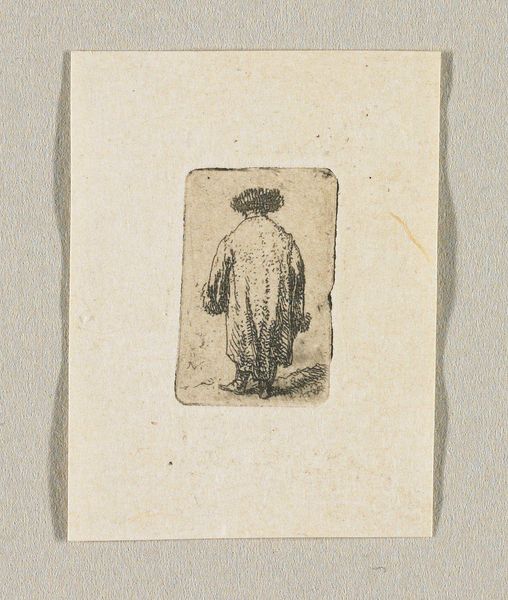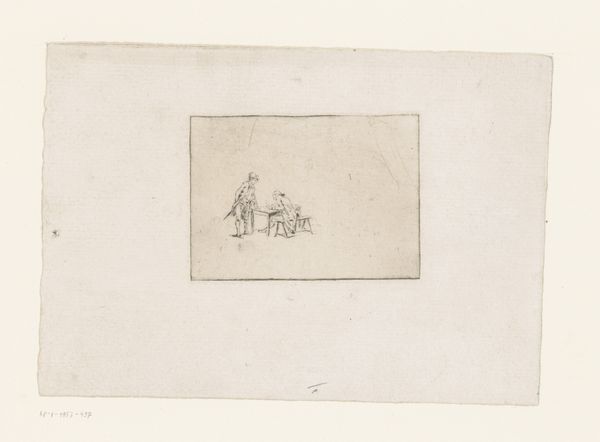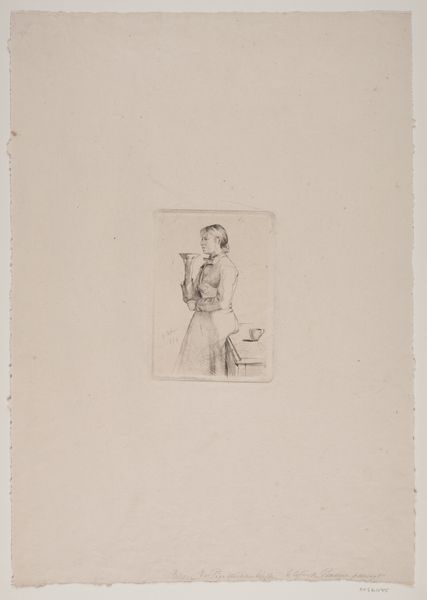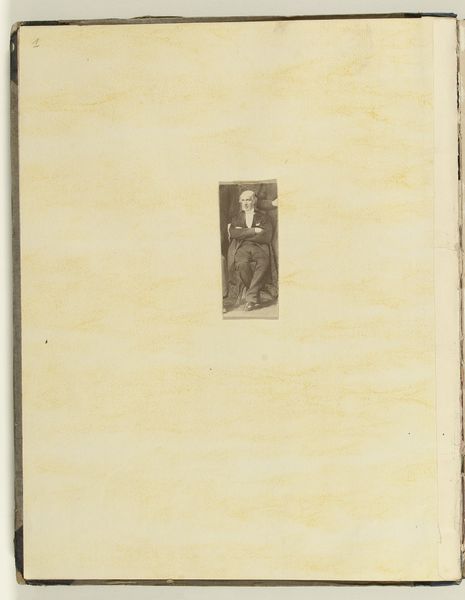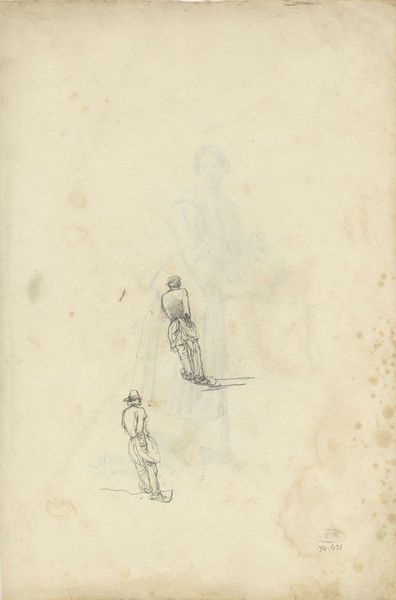
Lopende jongen naar links, een fles in de rechterarm, een brood (?) onder de linker 1825 - 1891
0:00
0:00
drawing, graphite
#
portrait
#
drawing
#
graphite
#
sketchbook drawing
#
watercolour illustration
#
genre-painting
#
academic-art
#
watercolor
#
realism
Dimensions: height 180 mm, width 152 mm, height 70 mm, width 50 mm
Copyright: Rijks Museum: Open Domain
Curator: Here we have Ernest Meissonier's "Lopende jongen naar links, een fles in de rechterarm, een brood (?) onder de linker," which translates to "Boy walking to the left, a bottle in his right arm, a bread (?) under the left", made sometime between 1825 and 1891. The piece is executed in graphite. What's your first take? Editor: Sparse. The composition feels really minimal, almost ghostly. The figure emerges from a nebulous background—very understated but strangely captivating in its simplicity. Curator: I agree, the spare rendering and the indeterminacy of his possessions allow for an exploration of labour, and perhaps more broadly the daily realities of the working class, in nineteenth-century France. I’m immediately drawn to consider the social stratification of that time. What did it mean for a boy to carry such burdens, both literally and metaphorically? Editor: Well, focusing on the visual, look at how Meissonier uses subtle shading to suggest movement. The slight lean of his body, the soft blurring around his legs… it’s all about conveying the fleeting moment, not some grand narrative. There is a real attention to form, line, the modulation of light, and texture which are intrinsic to the reading of this piece. Curator: Absolutely, and if we extend the discussion of movement to the sphere of identity, this prompts me to reflect on questions such as “Where is he going?" and "What social strata does he belong to?” Given the potential scarcity suggested by the load he bears, how do we understand his socio-economic circumstances, and how does his situation influence the reading of the piece within broader conversations surrounding inequity? Editor: I suppose if we stick to Meissonier’s technique, it’s evident he’s deliberately avoiding detail to leave the boy slightly anonymous. Maybe it encourages a universal reading—the timelessness of youthful labor and endeavour. Curator: I can appreciate the openness you find there, and the space for personal introspection, though for me it highlights the systematic and often brutal reality faced by marginalized communities in 19th century Europe, who remained consistently disenfranchised, with very little means of bettering their lot. Editor: Fascinating how our readings can diverge so radically! For me, it's the artist’s handling of line and light. But I recognise that to other viewers, that is clearly just one element in an interpretation. Curator: And for me, the intrinsic visual language has to lead somewhere, so why not use it to shine a little light into the lives of these historical individuals.
Comments
No comments
Be the first to comment and join the conversation on the ultimate creative platform.
